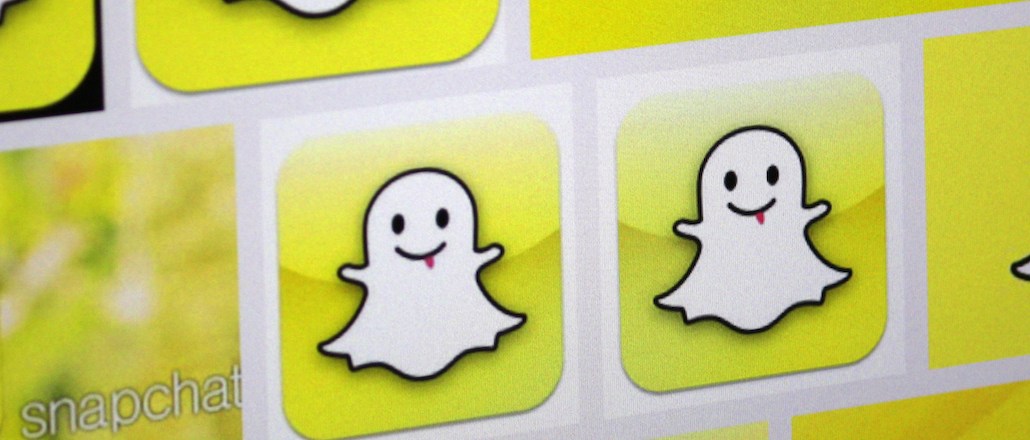
Snapchat is all about back to school right now. The app has given students a channel to broadcast their return to college and high school, and it has landed some big-name advertisers looking to reach this young crowd.
In the past week, Pink, Coca-Cola and the movie “The Visit” ran ads in Snapchat’s Back to School video streams. The sponsors appear to be a natural marketing fit for the multimedia messaging app, which has about 100 million daily users, the majority of whom are younger than 25 years old.
“For a movie like ‘The Visit,’ where the target audience is between 13 and 24 years old, being in the Back to School story is that marketing sweet spot,” said Doug Neil, executive vp of digital marketing at Universal Pictures, the studio behind the M. Night Shyamalan film.
 Advertisers are able to place ads in a few areas within the app, including the Stories section, which is where everyday users submit footage that Snapchat curates into a crowdsourced highlight reel.
Advertisers are able to place ads in a few areas within the app, including the Stories section, which is where everyday users submit footage that Snapchat curates into a crowdsourced highlight reel.
There are Live Stories for sporting events like Wimbledon and festivals like Coachella. This is the first year, Snapchat is doing Back to School stories for high schools and colleges.
One of the main gripes of Snapchat advertisers is that the platform lacks targeting technology to deliver specific messages to select audiences, and marketers said the Back to School stories are one way to help guide ads to a more focused demographic.
Advertisers are basically looking at Snapchat as similar to television, where it’s also hard to target ads and measure the ultimate effectiveness of the media.
The Back to School and campus Live Stories are one way to make sure brands are mostly targeting the right fan base, in this case people under 25 years old.
“Snapchat is a smart play if you’re a dominant player looking for that audience,” said a digital marketing executive, speaking anonymously to protect clients who advertise on Snapchat. “If you have a massive budget and room to experiment, it can help drive awareness.”
In the school stories, kids are sharing videos as they walk into class, hit the books, head to band practice, move into dorms, and other glimpses into student life.
The student stories are part of a broader push by Snapchat to cater to the college crowd and solidify its hold on that audience, which is very desirable to many advertisers. It also is doubling the number of universities that will have dedicated Live Story feeds.
Fifty colleges in the U.S. will have their own Live Stories, available only to people on campus, the company told Digiday.
Brands pay 2 cents a view for their sponsored videos to appear in stories, and the creative is customized for the app.
 Snapchat requires vertically oriented content meant to be played upright on phones. Coca-Cola, for instance, sponsored part of the high school story, and it showed a guy in pajamas quickly dressing for school. It was all shot in portrait mode.
Snapchat requires vertically oriented content meant to be played upright on phones. Coca-Cola, for instance, sponsored part of the high school story, and it showed a guy in pajamas quickly dressing for school. It was all shot in portrait mode.
The soft-drink maker didn’t need to flash its logo in the short video clip because the guy wound up wearing a Coca-Cola shirt.
This kind of low-key branding was intentional because Snapchat needs to approve every ad, and it doesn’t allow logos to take over the screen for too long, the digital marketing executive said.
“Snapchat is super anal about content,” the exec said. “But I appreciate that.”
More in Media

From sidelines to spotlight: Esports events are putting creators center stage
Esports events’ embrace of content creators reflects advertisers’ changing priorities across both gaming and the wider culture. In the past, marketers viewed esports as one of the best ways to reach gamers. In 2025, brands are instead prioritizing creators in their outreach to audiences across demographics and interest areas, including gaming.

Condé Nast and Hearst strike Amazon AI licensing deals for Rufus
Condé Nast and Hearst have joined the New York Times in signing a licensing deal with Amazon for its AI-powered shopping assistant Rufus.

Media Briefing: AI payouts may be entering a new era
AI compensation is evolving — and new models, not just publisher demands, are driving the shift beyond flat-fee licensing.





